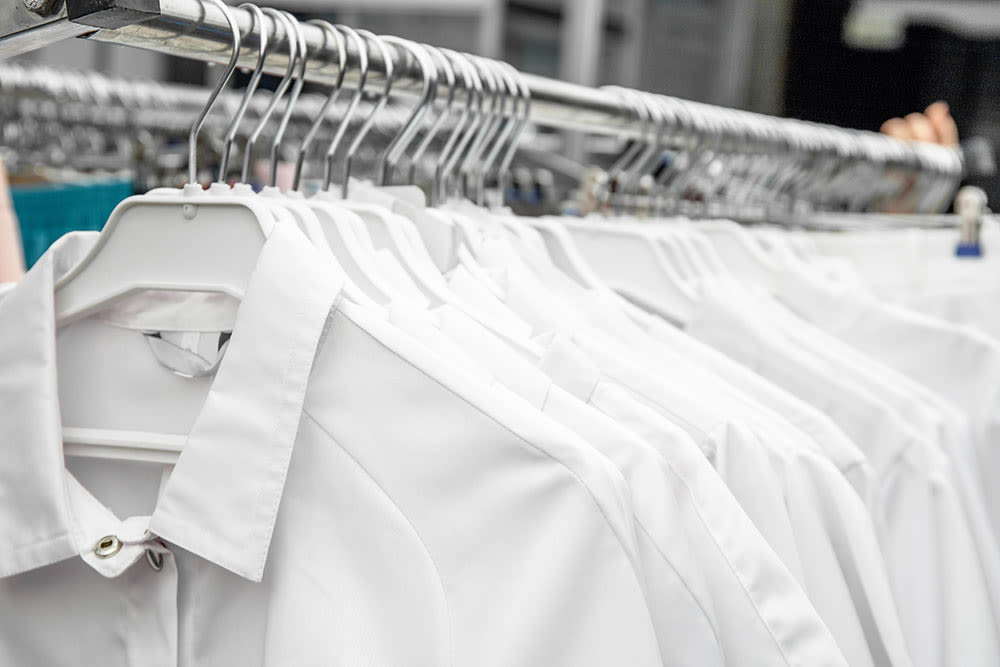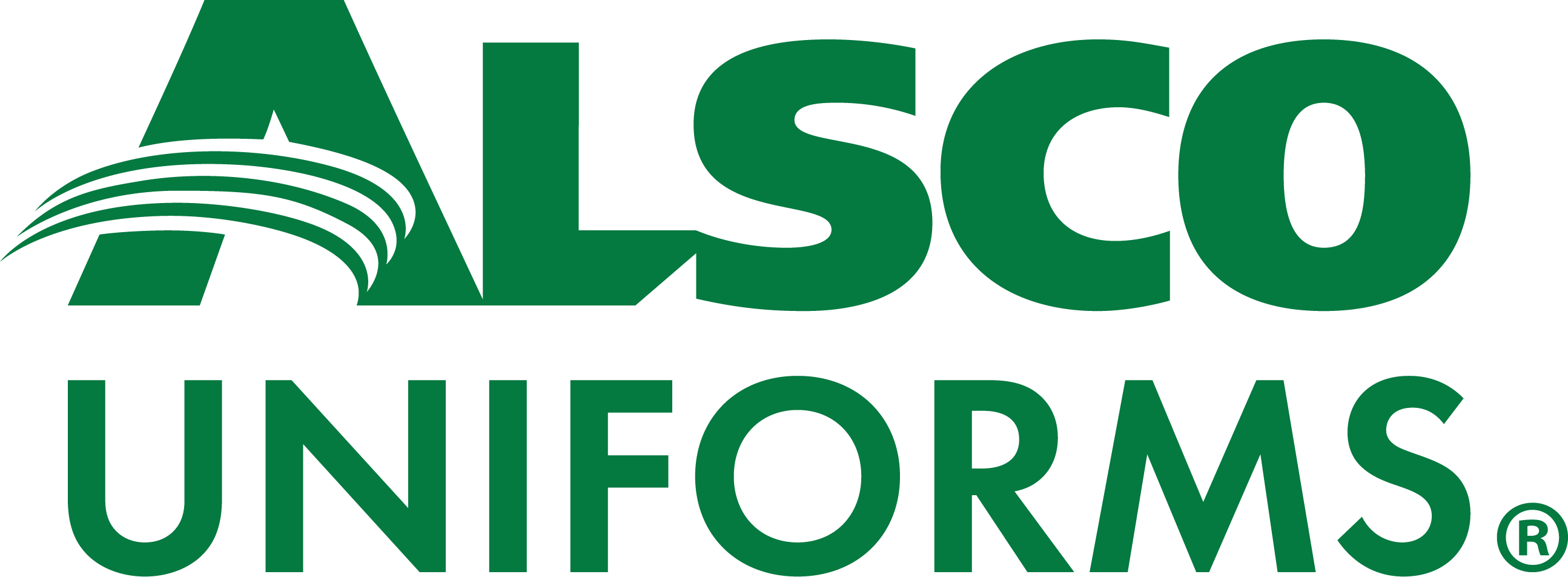
The nature of medical and other lab work makes a properly sized lab coat important for reasons beyond fashion. If an individual in these fields trips or has their mobility affected by their coat, it has real potential to do harm to either them or those around them. Broadly, three factors should be considered when determining the right fit for a coat: shoulder length, arm length and ideal coat length.
Important Considerations When Choosing a Lab Coat
The following sizing considerations should be made when choosing a lab coat:
Shoulders
A lab coat’s shoulder seams need to match the entire length of a wearer’s shoulders. Because a lab coat is worn over clothes, make sure to measure this length while the intended wearer is wearing a typical outfit they might have on while wearing the coat.
For a looser fit in the arms and shoulders, this final measurement can be increased slightly. Although it’s important that a lab coat fits well, it’s also a fairly utilitarian piece of clothing. Because of this, it’s most important that it isn’t so tight that it impedes a wearer’s workflow, but it shouldn’t be so loose that it could cause accidents or injuries.
Sleeve Length
A relatively common issue with lab coats is a wearer needing to roll up their sleeves in a way that can be somewhat unsightly and may pose a catch risk. This is generally the result of improper arm fit.
A coat should usually finish at or slightly before a wearer’s wrists. An intended wearer’s arm length should be measured with their arms at their side.
Tip: Always ensure sleeves are long enough to tuck into gloves, especially in cleanroom or hazardous environments. If sleeves are too short, skin exposure becomes a safety risk.
Chest Measurement
A well-fitting lab coat should offer enough room across the chest to allow full range of motion without feeling restrictive. To get the right measurement, wrap a measuring tape around the fullest part of the chest while the intended wearer is dressed in typical work clothing, such as scrubs or a button-up shirt.
Lab coats are often designed with a bit of extra room in the chest to accommodate layering, but too much space can create a boxy or baggy look and may interfere with tasks that require precision or close contact with equipment.
Tip: When in doubt between sizes, choose the larger option for comfort and mobility. A slightly looser chest fit is preferable to one that pulls across the front when buttoned.
Coat Length
The coat length of a lab coat can vary and it is to some degree a matter of taste. However, it’s important that a coat is long enough that any splash of fluids during lab work is likely to be caught by the coat rather than one’s pants and the coat shouldn’t be so long that it interferes with movement or presents a trip risk. Generally, individuals aim for a lab coat to be roughly mid-thigh, with the coat ending just above the knee.
An otherwise properly sized lab coat will usually have a proper coat length simply because most coats are intended to end at about mid-thigh level when worn by an individual they’re sized for. If the rest of the coat fits well, the length will usually be appropriate.
Note: For taller individuals, you may need to size up to ensure proper sleeve and coat length. Some coat styles also come in ‘tall’ versions.
The Value of a Back Belt
Some lab coats come equipped with a back belt, which is often adjustable. This belt can help keep a coat tighter around the waist. It has the potential to give a coat a more stylish fit and this is particularly important for people with petite figures whose coats might otherwise tend to look baggy or ill-fitting.
These belts aren’t essential for a lab coat to look good or fit right, especially if one gets their lab coat tailored to their body. But they’re a common, easy-to-find feature that many people like in a coat.
Men’s, Women’s & Unisex Coats
There are three types of lab coat styles: men’s, women’s and unisex. This is important because the tailoring of these styles can be different, although men’s and unisex coats will generally be tailored the same or at least similarly.
Both men’s and unisex lab coats will typically be sized in accordance with suit jacket dimensions. Experts often suggest buying clothes sized in this way by determining your chest dimensions using a flexible measuring tape. A chest measuring 40 inches long means an individual will likely best fit into a size 40 lab coat. Make sure to measure under the armpits and around the shoulder blades to size the widest part of the torso.
Women’s lab coats can be more difficult to determine the proper sizing for, although dress size is often the best starting point. Many lab coat manufacturers or retailers will have charts you can reference to see which measurements are relevant and what you should check before committing to an option. You will likely at least want both your chest and hip measurements to be accounted for by a coat’s cut to get a proper fit.
It’s also worth noting that different brands will often size their coats slightly differently. The optimal sizing in one brand may be similar but will rarely be identical to that in a different brand. Make sure to read any available reviews on coat sizing to see what people are saying about how their coats fit and read any material a brand provides about their coat sizing to make sure you can get the lab coat that is the best size for you.
Additional Lab Coat Sizing Tips
To ensure a secure, functional fit:
Measure while wearing work clothing – Lab coats should accommodate what’s worn underneath.
Size up for flame-resistant (FR) or barrier coats – These tend to fit more snugly and require room for layering.
Be cautious with unisex sizing – These can run large for women and may need tailoring for a better fit.
Check brand-specific charts – Manufacturers don’t always follow the same sizing standards.
Try before you buy – If possible, try on multiple sizes or request fit kits when ordering in bulk.
Rental Services With Alsco Uniforms
Finding a work uniform that fits can be a somewhat complicated process, but it’s made easier with rental services. When you work with Alsco Uniforms, we can help you find lab coats that fit your employees well and we’ll ensure you always have them on hand.
We handle the laundry through our uniform cleaning service, so your healthcare uniforms always look fresh and crisp. If a lab coat is torn, stained or otherwise damaged, we’ll simply take it out of the rotation and replace it with a new one.
Our workwear rental services can be an excellent way to reduce the cost of lab coat maintenance and the general hassle that purchasing lab coats and other uniforms can often bring. Contact us today to learn more about how rental services can simplify your lab coat and uniform management.
References
A How-To Guide on Properly Sizing Your Lab Coat. (September 2022). GoodMenProject.com.
